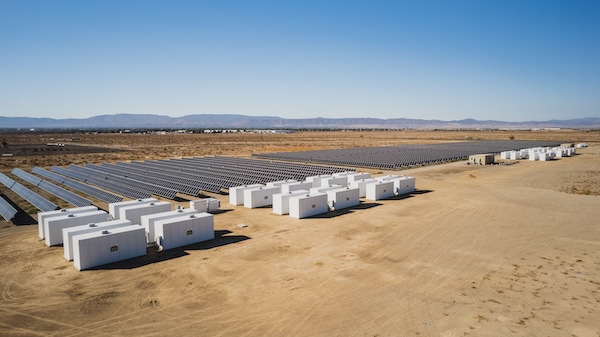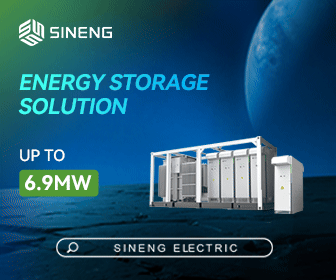The Power of a Second Chance
Ever heard the saying, “One man’s trash is another man’s treasure”? Turns out this applies to batteries, as well. Batteries have been prematurely disposed of, despite still holding three to five years of discharge cycles within them, meaning they can be put to use in an application. Since they are often less expensive than new batteries and incredibly versatile, batteries on their second life can be a source of stationary storage for anything ranging from grid support to renewable energy collection. Extending their lifespan by many more years makes these batteries great for the environment, promoting sustainability and further delaying the toxic recycling and mining processes. Additionally, depending on the renewable energy application and how long they are used, second-life batteries have the chance to offset or completely compensate for their first-life carbon emissions, since they are no longer feeding off of the power grid. Almost any rechargeable battery chemistry can be reused, including lead-acid, Nickel-Cadmium Wet, zinc, and all types of lithium-ion batteries. Overall, however, there are two categories of second-life batteries:
- Stationary Storage to Stationary Storage
- Electric Vehicle (EV) to Stationary Storage
 The largest difference between the two are the safety testing costs. Underwriter Laboratories (UL) tests consumer and industrial products for electrical safety and writes technical standards for equipment, including second life batteries and systems that are connected to the utility grid. While their procedures hold no legal weight alone, the US and Canada fire and building codes refer to UL tests and standards, and they’ve since become law. This slows deployment because it is expensive and, in some cases, testing takes a lot of time.
The largest difference between the two are the safety testing costs. Underwriter Laboratories (UL) tests consumer and industrial products for electrical safety and writes technical standards for equipment, including second life batteries and systems that are connected to the utility grid. While their procedures hold no legal weight alone, the US and Canada fire and building codes refer to UL tests and standards, and they’ve since become law. This slows deployment because it is expensive and, in some cases, testing takes a lot of time.
The more common form of reuse is using a backup storage battery until the end of its first life, and then giving it a second-life as renewable energy storage. It is a great way to passively collect and store energy produced by wind and solar farms, helping to reduce their carbon footprint and increase the amount of available renewable energy on the grid.
Conveniently, second-life batteries are customizable, giving buyers the option to build grander storage systems that can hold larger amounts of energy over time to meet their needs. Using stationary storage backup batteries for stationary storage renewable energy systems has one advantage: There are already GWhs of installed base of stationary storage batteries. For example, 32 second-life lead-acid AGM non-spillable batteries were used to provide backup support to a grid-tied solar array for a hospital in The Gambia, Africa. In this case, 16 batteries created 4 strings of 4 batteries in series. These 4 strings were then wired in parallel to create a “Block” of 18Kwh of useful energy (a “Stack” is made of 2 Blocks totaling 36KWh of useful energy). This gives the hospital enough power to continue performing surgeries for 2 hours into the night when the solar and grid are not working. Eventually, a total of 6 Stacks will provide 7-8 hours of power.
Another common way to repurpose batteries is by converting EV batteries into stationary storage. This is especially relevant given that the EV battery market is expected to skyrocket. Over the next 3-10 years, depending on how they are driven, EV batteries wear out for vehicle transport when they reach 70 to 80 percent state of charge. At this point, they have reduced driving range and available power to dependably manage emergency maneuvers (like quick acceleration to avoid a collision). However, to prematurely recycle a 100Kwh battery with up to 80 percent reserve remaining is a large waste of resources — and at the cost of a sizable carbon footprint. If you have a 100KWh EV pack, the remaining 70-80Kwh is useful for stationary energy storage applications such as manufacturing, mining, “peak shaving” to prevent expensive power spikes caused by sudden equipment power demand, and remote communities with renewable energy and other power sources.
Keep in mind that reuse comes before recycling. Recycling is a great choice at the battery end of life - not before that occurs. Unfortunately, the processes involved in recycling batteries can release all the toxic materials into the environment, poisoning surrounding soil and groundwater stores, polluting the air with excessive amounts of greenhouse gas emissions, and pulling loads of energy from the grid. Reusing batteries delays this phenomenon for many years, giving researchers additional time to perfect the emerging “cathode to cathode” recycling method; this has fewer steps, and is potentially less costly to make battery active materials to make new Li-ion batteries than today’s chemical, furnace, or electrolysis recovery methods.

A monumental amount of energy storage systems is already installed, with even more planned for the near future. In other words, the market for second-life batteries is poised for exponential growth, currently on an expansive hockey stick graph. This is a growing industry, yet there is room for so many more. Giving batteries a second life is a reliable and effective way to make energy more accessible to those in need while reducing their impact on the environment.
Blessin McFarlane is Marketer and John Kincaide is CEO of 2nd Life Batteries. They can be reached at [email protected] and [email protected] respectively.
2ndLife Batteries | www.2ndlifebatteries.com
Author: Blessin McFarlane and John Kincaide
Volume: 2024 July/August









